At 22 years old, Paul Hill wants to improve life for his peers through technology. His first app, Pronto!, which came about during the height of the Black Lives Matter protests in 2020, is a directory for protestors including resources, places to donate, and ways to track down people who’ve been arrested and connect them with legal aid. Then in November 2020, he started selling art, and realized there weren’t systems in place for young artists to build community with their peers and reach other young collectors in their network.
So, he invented Strada, a new app and IRL exhibition series (the next show takes place on September 17 in New York City) for showcasing emerging artists’ work. Catered to specifically Gen Z, the app offers educational resources in the form of newsletters while also offering a percentage of its sales as artist grants.
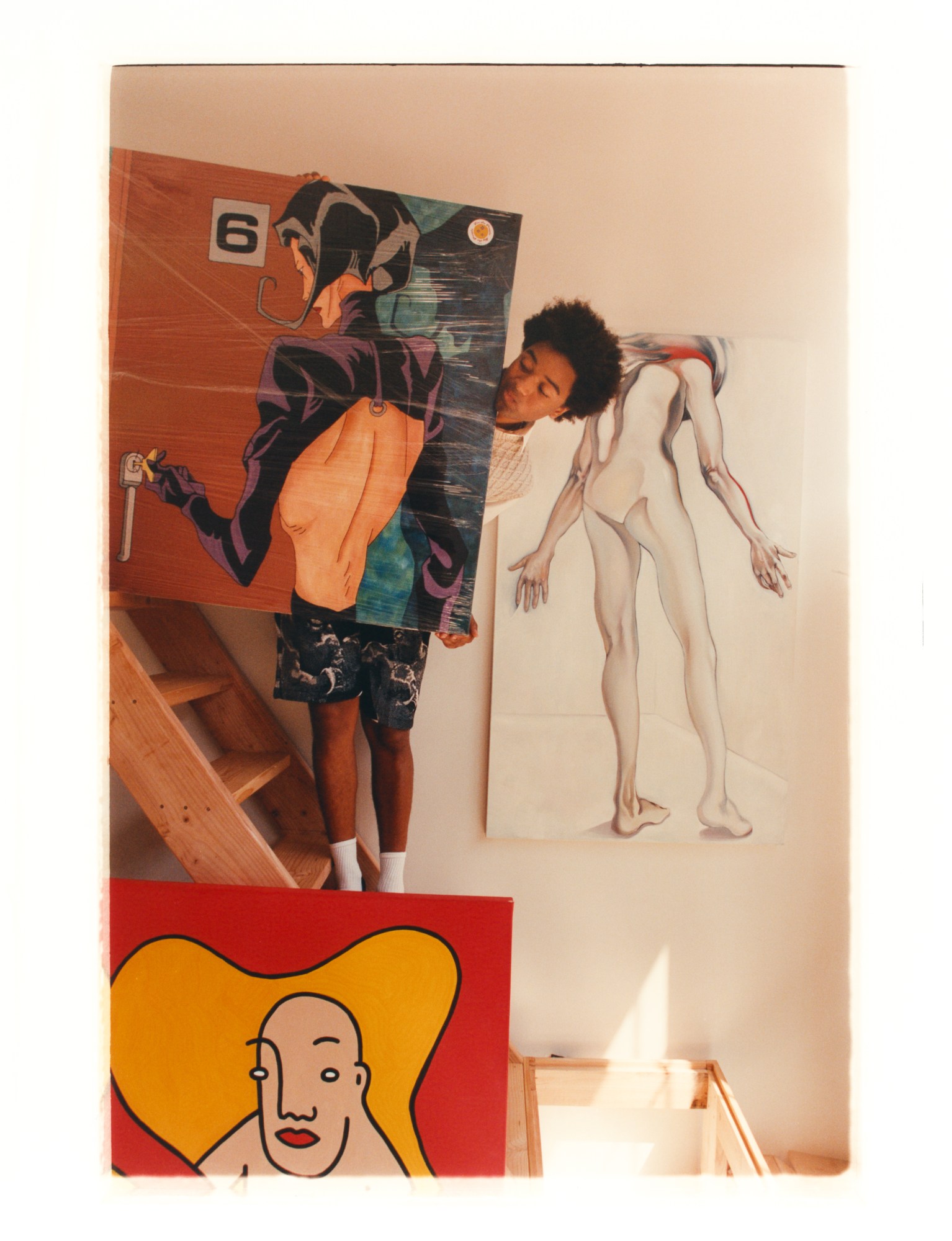
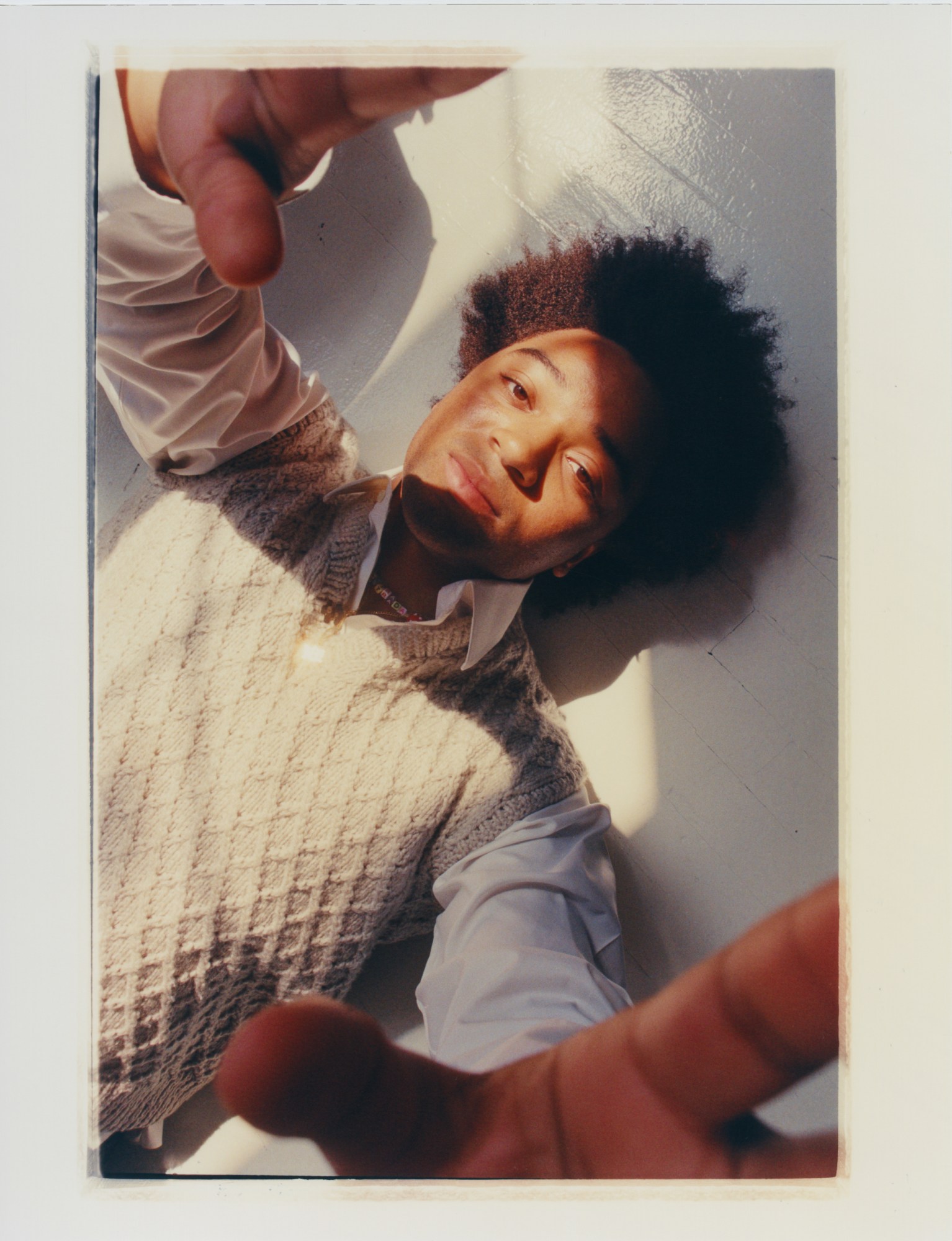
While Strada’s first exhibition opening garnered over 500 people, its next one is likely to draw just as big of a crowd. The group show, titled “Genesis: Light and Beauty,” will serve as a precursor to the app and marketplace, launching the next day. “Being able to create and curate a show of mostly young, Gen Z emerging artists, or people at the start of their career, even if they have been around for a few years now, is really exciting,” Paul tells i-D.
i-D spoke with some of the artists featured in Strada’s new show about the narratives behind their work, what they hope all people take away from it and how it feels to be part of this new platform.


Amy Bravo, 24, painter and MFA student at Hunter College
What is the story behind your artwork? What inspired you to create it?My artwork is both a grieving mechanism and a mechanism for manifestation and investigation of utopia, or “paradiso”. After the passing of my paternal grandparents, I was struck by not only the loss of them as family members, but the loss of their oral histories and their physical connection to our homeland in Cuba. I began to delve into their lives on their small family farms in the rural town of Fomento, and how they lived before fleeing dictator Fulgencio Bautista in 1949. As I did this, I became obsessed with creating paintings that depicted a prophetic homeland on a mystical tropical farm, functioning as an imperfect queer utopia. The figures act like avatars for imagined family members and lovers. The landscapes themselves feel more like self-portraits than the figures do, as they reveal what it is I do and do not know about the physical experience of Cuba, having not yet visited the island. This unfamiliarity allows the landscape to become stranger, and more illogical, as if it’s a place pretending to be another place. As a third-generation Cuban American who grew up very far away from Cuban culture and communities, I often feel like a person pretending to be another person.
What do you hope viewers take away from seeing your artwork?
To me, the work is loaded with yearning, conflict, love and awkwardness. For someone to step away from the work with any mixture of those feelings is a win. I once had someone ask, after seeing my work with little to no context, “What does it mean to love someone you don’t agree with?” That question was one of the best responses to the work I’ve had, because it’s a question I didn’t realize I’d already been asking myself for years but couldn’t answer, and still can’t, but it made me want to try to answer it for the rest of my creative life.
How does it feel to be part of Strada’s exhibition and new art platform?
I’m grateful to Strada for creating an avenue for emerging artists outside of the traditional structures for selling work. It can be challenging to feel like there is any autonomy as a young artist over how, when and at what percentage your work is sold. Reclaiming some of that autonomy is crucial to build a career that is sustainable, and honors your intentions for your work. To be a part of the show, and in such good company among other artists I’ve been excited about for a while, is a huge honor.
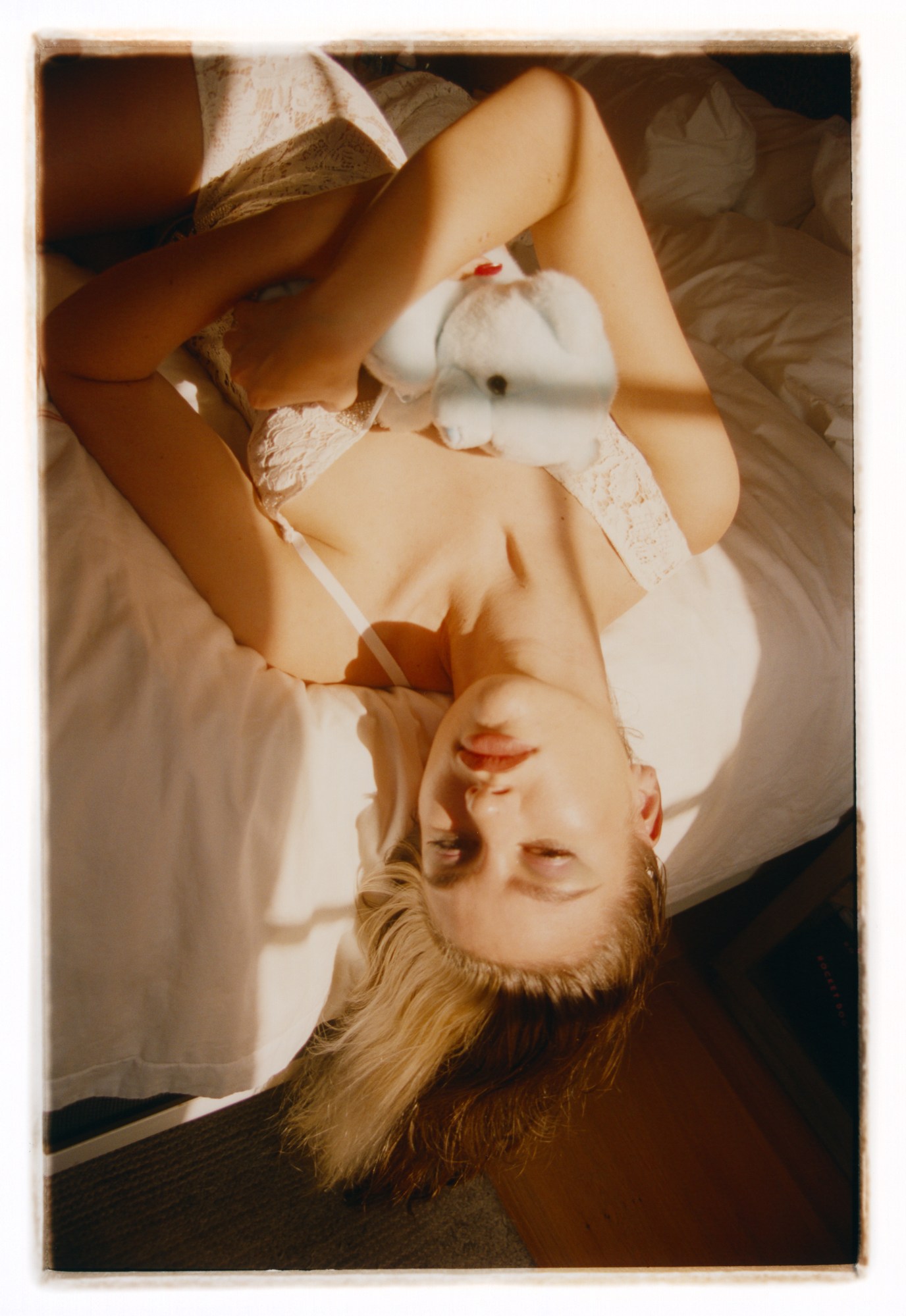
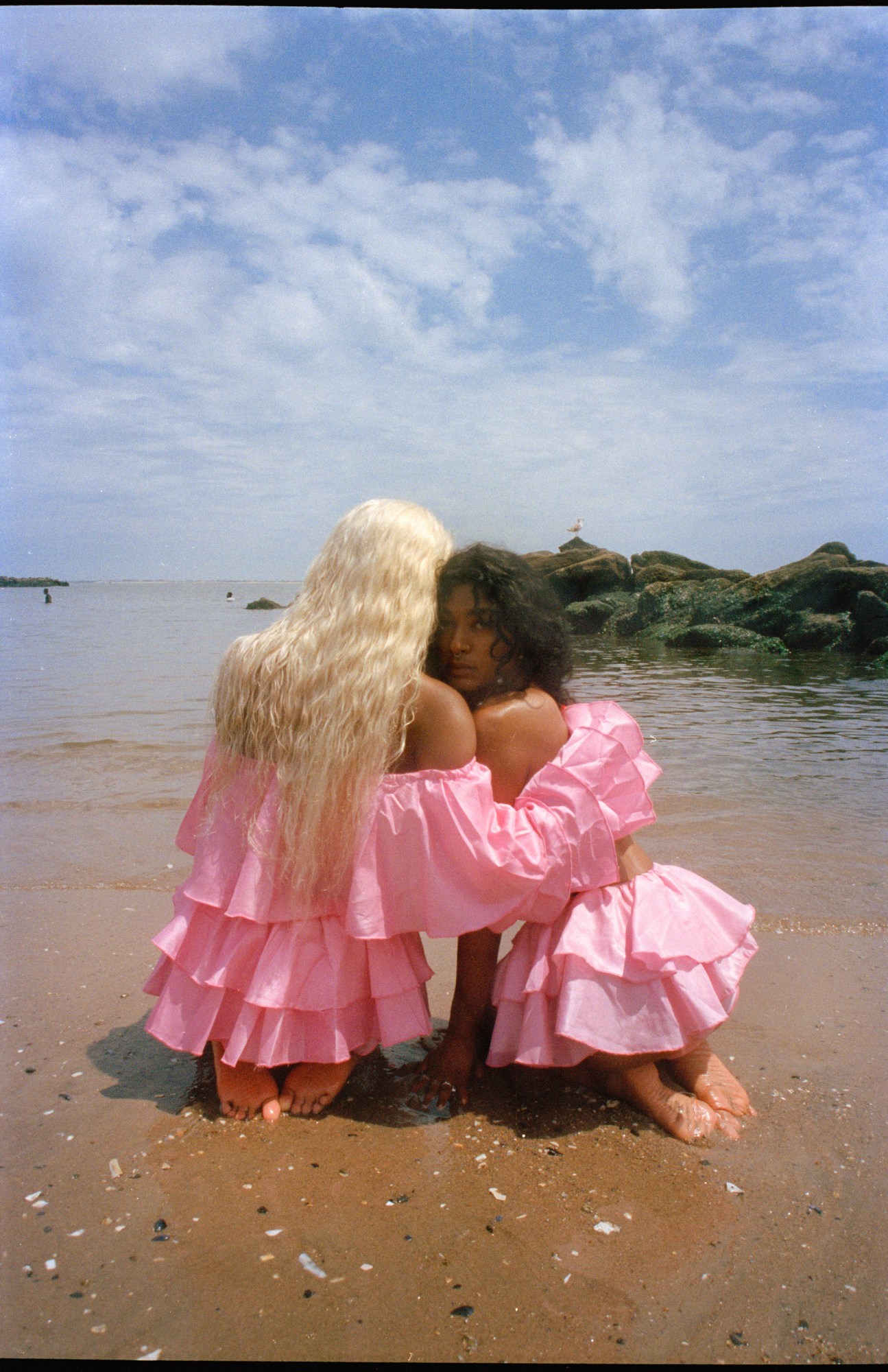
Sophia Wilson, 21, visual artist and photographer
What is the story behind your artwork? What inspired you to create it?The two works I have in this upcoming show are actually from completely different bodies, but they pair quite nicely. Both pieces, one from 2017 and the other from just last month, are my take on growing pains as a woman in her late teens/early 20-something years. All of my subjects are people that I’ve known in real life, which is definitely something I prefer to do when it comes to casting because it allows for a more intimate view. These works are a self-reflection of sorts. It’s nice to show a more calm, soothing and distinctly feminine selection of my art than I normally do.
What do you hope viewers take away from seeing your artwork?
First and foremost, I always hope that my artworks make someone feel something, or feel seen. A lot of the photographs in media and fine art growing up did not feel relatable to my identity, so I strive to create works that other minorities (especially young women of color) can relate to. I hope that viewers can use my photographs as a way to get an honest peek into the life of a young woman like myself, becoming content in exploring their emotions.
How does it feel to be part of Strada’s exhibition and new art platform?
It feels like a much needed rebirth of the fine art world. What Paul and Strada are doing feels like a much more democratic version of any sort of system I’ve ever seen in place for the fine art world. Selling pieces has always been a highly gatekept process. I also love the curation of the show so I feel lucky to be put next to such lovely artists.
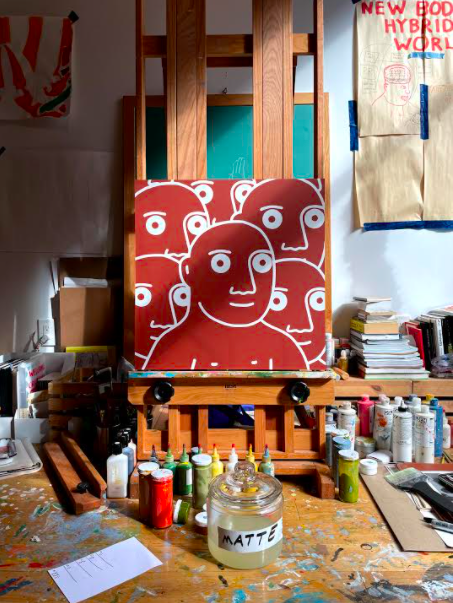
Danny Cole, 21, artist, New York City
What is the story behind your artwork? What inspired you to create it?
I make art of a nearby magical world best described as The Creature World. Each art piece alone is a window, but I see the real art as being the place these visuals take us to. I like for that place to be shared, so I try to present my art in community settings so we can exist there together.
What do you hope viewers take away from seeing your artwork?
The Creatures and corresponding environments I paint are very open-ended. I hope with that, people will fill in the blanks and see themselves in the art. Half of what they see can be what they are approaching the art with. In the same breath, seeing others look at the Creatures like a mirror can inspire us to look at each other like the mirrors we all are, too. That’s the goal.
How does it feel to be part of Strada’s exhibition and new art platform?
I like Strada because I feel like it brings art to people like me. Contemporary art doesn’t reach me. As in: a person like me doesn’t even see it. It reaches people in the art world. Every other art form: fashion, music, video… reaches everyone. It’s cool to see Strada bringing fine art to people who fall into that category of everyone. I’m a part of everyone.
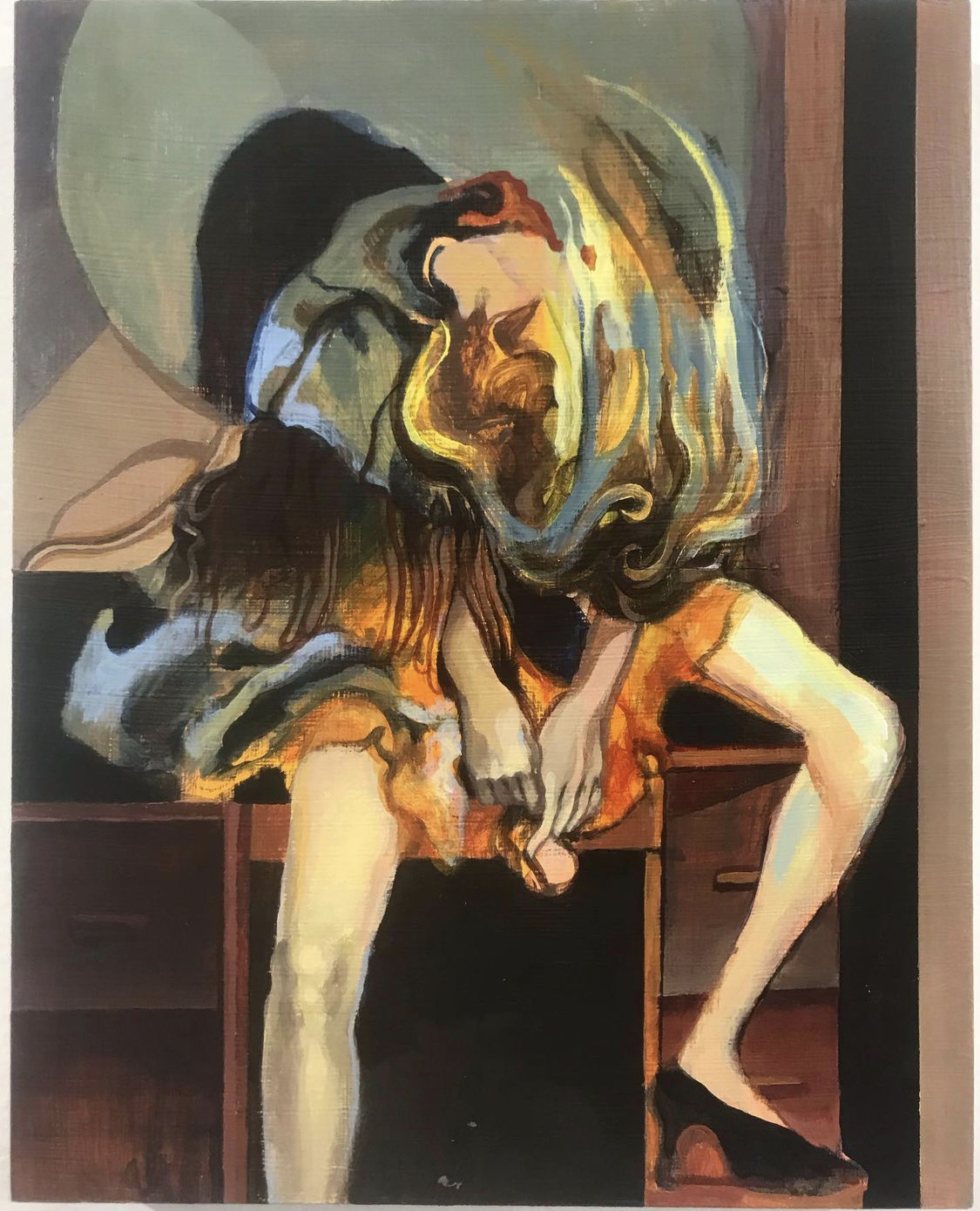
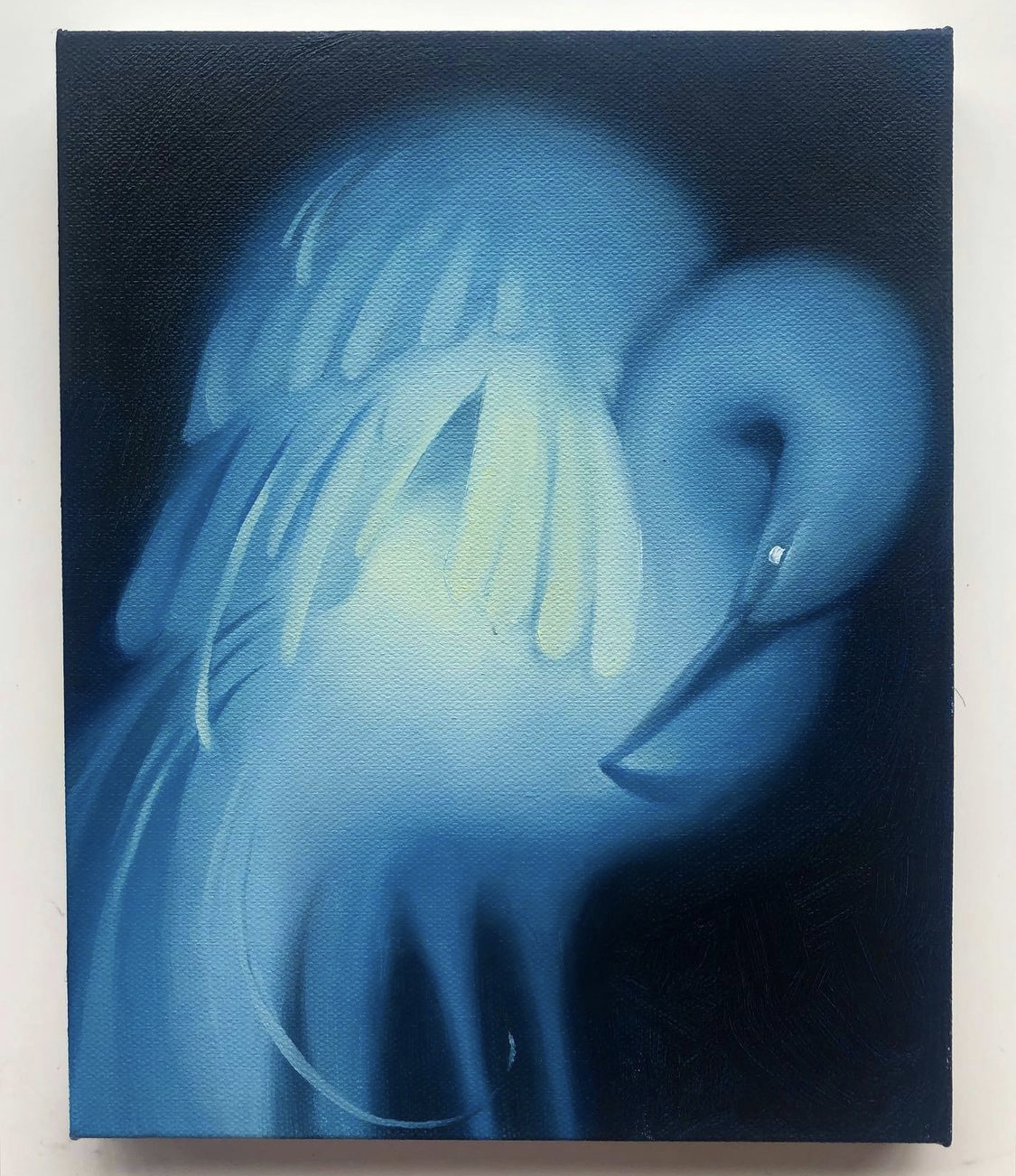
Quinn Wilke, 22, figurative painter and Fine Arts student at Hunter College
What is the story behind your artwork? What inspired you to create it?
My work is a reflection of how I grew up. I think being a part of Gen Z and having this constant access to information and consuming media, the figuration in my paintings reflect this weird amalgamation of different things that fascinate me. It’s a combination of fantasy, mass media, popular culture and influence from artists spanning back to the Renaissance. Both sincerity and light-heartedness are integral in my paintings.
What do you hope viewers take away from seeing your artwork?
I hope viewers can see that aesthetics can be depicted in a multitude of different sources, and to have fun with what you genuinely are interested in.
How does it feel to be part of Strada’s exhibition and new art platform?
Being a part of Strada’s initial launch is super exciting. The art world lacks transparency and support for young artists. This platform gives direct accessibility towards its artists in a way that is rarely seen.
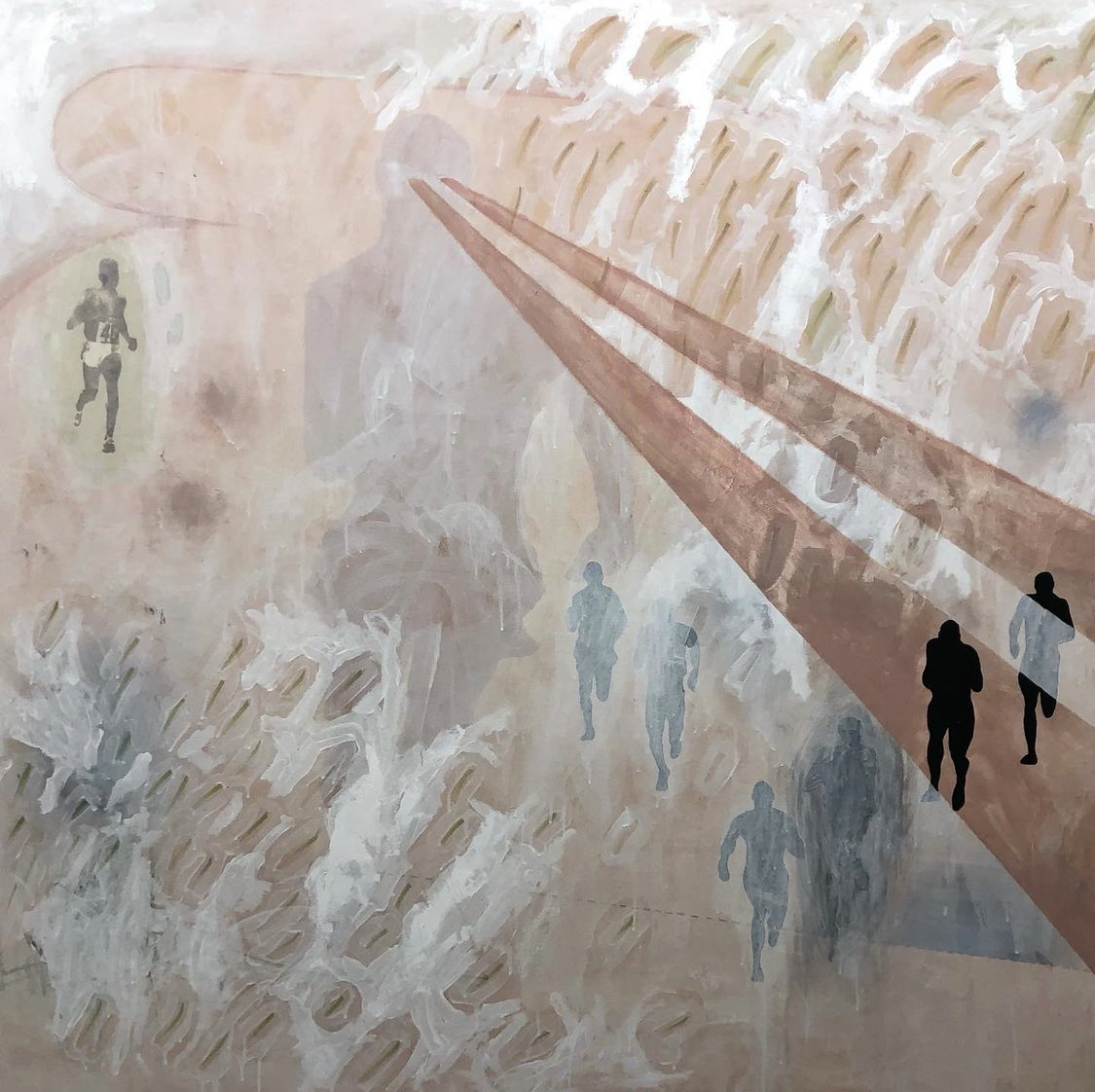
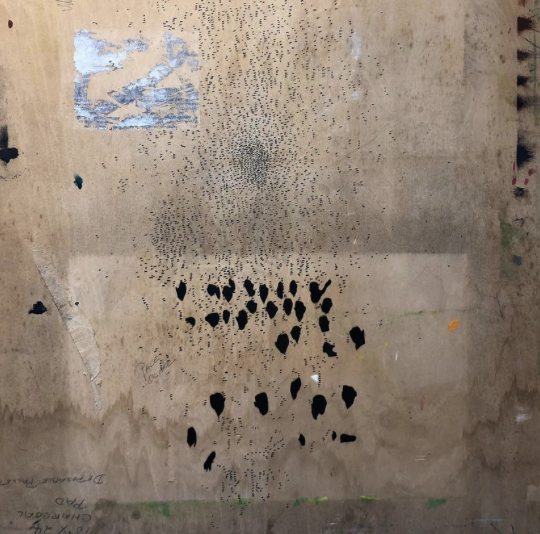
Turiya Adkins, 22, screen printing and studio assistant in Brooklyn
What is the story behind your artwork? What inspired you to create it?
“Running will be the way your life and mine will be described. As in ‘the long run’……Or as in ‘running out of time.’” -Gil Scott-Heron, Running
I took from Heron an understanding of the enduring connection between Black bodies and running. In meditating on this connection, I found an unwavering relationship between the act of running and the Great Migration. The works in this show came from my desire to visualize these connections. In seventh grade, my science teacher showed us a video of Mike Powell breaking the long jump record, jumping 29 ft 4 1/2 inches at the 1991 Tokyo World Championships of Athletics. Since then, I’ve had a fascination with the history of track and field, particularly because it’s a sport dominated by Black people. I started collecting 70s and 80s Track and Field News magazines, as well as Sports Illustrated issues. Thinking more critically about the sport as a whole was my inspiration.
What do you hope viewers take away from seeing your artwork?
I spend a lot of time being concerned with what viewers are going to take away from my work. At the moment, it only hinders me from focusing on my own intentions. So put simply, and without too much weight, I hope the work acts as a catalyst for more critical looking and thinking.
How does it feel to be part of Strada’s exhibition and new art platform?
It’s very exciting to be a part of the show and Strada in general. Things are changing quickly in both the art and fashion industries, especially winding down from the pandemic. I think accessibility is finally much more at the forefront, especially when it comes to who is able to both buy and sell artwork.
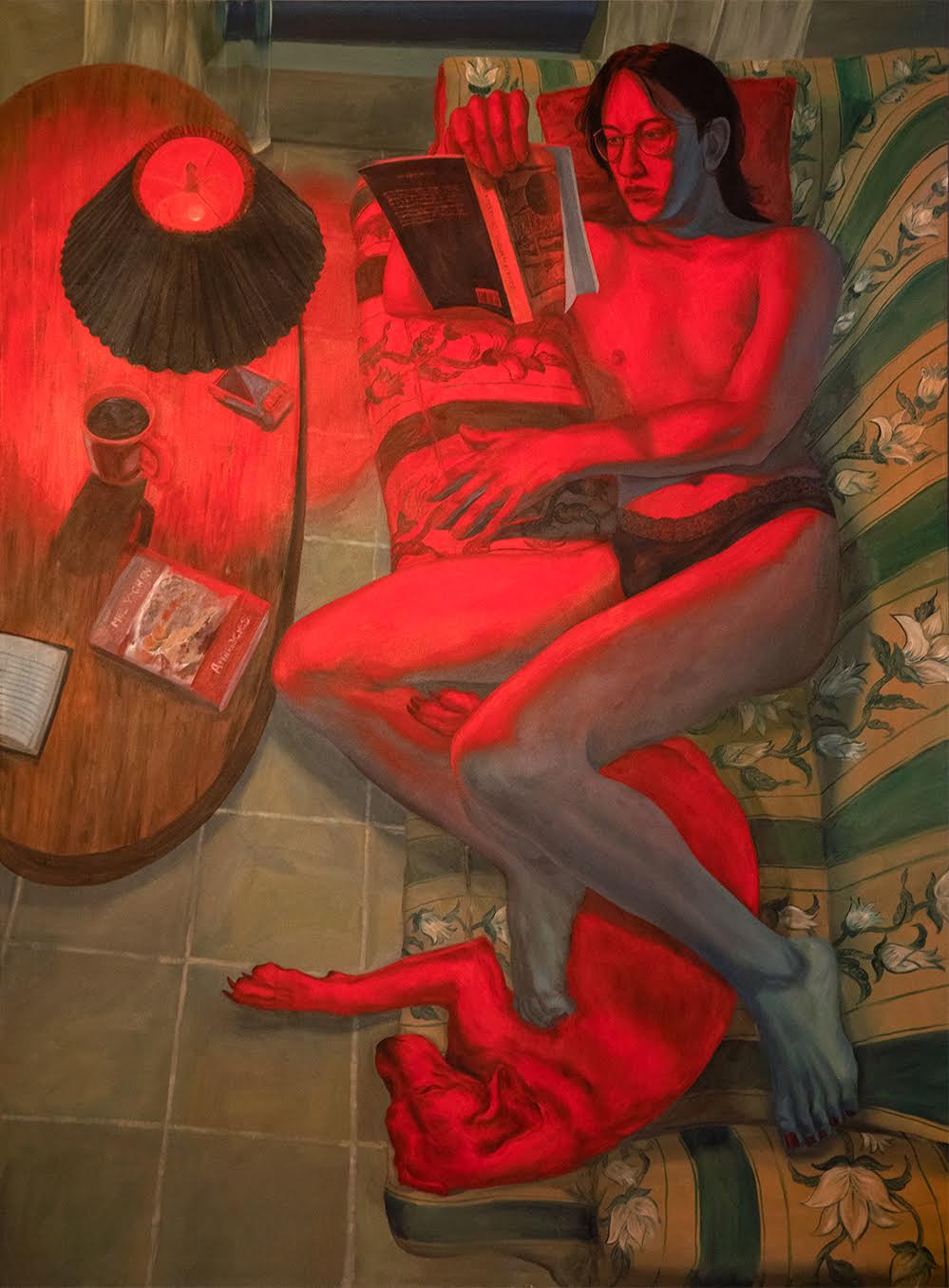
Amanda Ba, 23, painter based between New York and London
What is the story behind your artwork? What inspired you to create it?After creating a series of paintings that drew from the critical theory I was reading at the time, I wanted to take a small break and do a portrait again. Portraits record who is influential in the painter’s life at the moment, but they are often also an ode to the relationship between the sitter and the painter — although the portrait is of one person, it can be about two people. I wanted to create a portrait of queer intimacy, as that is something that has been central in my life since I started dating my partner. This painting depicts my partner at the beginning of her transition, with two books that she introduced me to. Both books have proven to be very informative and inspirational for my painting practice. In her hand is Geoontologies by Elizabeth A. Povinelli; on the table is Animacies by Mel Chen.
What do you hope viewers take away from seeing your artwork?
Any or all of the following: images of queer intimacy, Asian love, radical identity, a newfound interest in critical theory, possible worlds, intersectional feminism, Elizabeth Povinelli/Mel Chen/Judith Butler/Donna Haraway, the otherwise, POC solidarity, transgender representation, dogs as kin, dogs that read, transmateriality, transmatterings, racial animacies, alternative domesticities, diasporic experience, American experience, marginalized experience, a love of Parliament cigarettes and black coffee, beauty, love, sex, tenderness, subversion…
How does it feel to be part of Strada’s exhibition and new art platform?
It’s really fun to be a part of this exhibition. I’m only in New York for a month, and the opening of the show happens to land on the day of my birthday. It feels serendipitous that I get to gather all of my friends together in New York for an exhibition and then to party together! Not to mention the amazing artists I am showing with — Danny Cole, Sophia Wilson, Amy Bravo, Joseph Olisaemeka Wilson — together we cover such a wide range of mediums and topics and are all working with/within our communities. I think it’s going to be a really dynamic and dope show.
Strada’s second exhibition will take place on September 17, from 7-11 p.m. at 504 W 22nd St.


